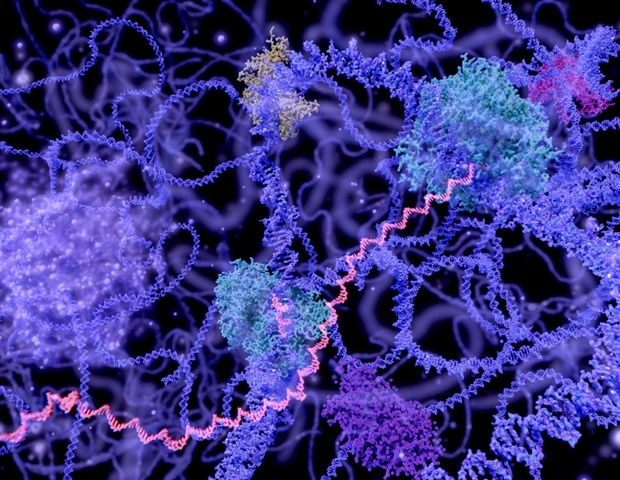Nearly three-quarters of athletes reported a spontaneous headshake after a kinematic event following a self-reported concussion.
 Study: Spontaneous Headshake after a Kinematic Event (SHAAKE): Evaluating the Utility of a Potential New Sign in the Diagnosis of Concussion. Image Credit: Gorodenkoff / Shutterstock.com
Study: Spontaneous Headshake after a Kinematic Event (SHAAKE): Evaluating the Utility of a Potential New Sign in the Diagnosis of Concussion. Image Credit: Gorodenkoff / Shutterstock.com
A recent Diagnostics study investigates how spontaneous headshake after a kinematic event (SHAAKE) may be a novel sign to diagnose concussion.
Importance of concussion diagnosis
Concussions are mild brain injuries that affect brain function. Several studies have indicated that both undiagnosed traumatic brain injuries and delayed concussion diagnoses increase recovery time and the risk of subsequent neurologic and orthopedic injury.
The symptoms associated with a concussion may not present immediately, thus preventing their timely diagnosis in some cases. Concussions can also differ based on the individual and injury, which determines the affected neurotransmitter and metabolic pathways that may lead to axonal injury, neuroinflammation, and blood flow changes.
Current concussion protocols mandate that the affected individual is immediately assessed if a concussion is suspected. The clinical judgment of a health care practitioner is regarded as the gold standard for concussion diagnosis. Multiple tools, such as ImPACT, King-Devick Test, and the Sports Concussion Assessment Tool, also help clinicians diagnose concussions; however, the sensitivity and specificity of each tool varies.
Common visual signs of suspected concussions include ‘slow to get up,’ ‘loss of responsiveness,’ and ‘blank and vacant look.’ SHAAKE, which refers to players shaking their heads back and forth for seconds to minutes after a collision, has also been frequently observed in concussion cases.
Several major organizations, including the American College of Rehabilitation Medicine, have determined that the detection of one or more observable clinical signs is sufficient to diagnose a concussion. In fact, the updated National Football League (NFL) concussion assessment through the visual signs checklist had an overall sensitivity of 73% and specificity of 65%. Nevertheless, existing visual sign checklists for concussion assessments are associated with variable sensitivities.
About the study
The current study investigated the potential of SHAAKE for concussion diagnosis. Survey participants were recruited from the international clinical research registry of the Concussion Legacy Foundation.
Individuals who played sports at any level and were 30 years of age or younger were considered for the current study. Younger athletes were recruited in the survey because of the increased possibility of receiving formal concussion education under existing policies.
A cross-sectional study design was followed to obtain relevant data about participants’ demographics, highest level of sports participation, type of sports they played, and whether they served in the military. Approximately 33% of the cohort completed the survey and were included in the study.
Study participants were provided with five videos showing a sports impact, following which the concerned player was rapidly shaking their head laterally back and forth for at least one full cycle at a rate between two and eight Hz. After watching the video, the study participants were asked whether they remember making similar movements.
Those who remembered making these motions were given an additional list of thirteen reasons for why they believed that the SHAAKE occurred, such as changes in vision, auditory changes, and dizziness, as well as symptoms not associated with the concussion including scalp pain and feeling of chills. Study participants were also asked to provide suggestions as to why they made the head movement after the collision.
Study findings
The study cohort included both male and female athletes at a prevalence of 52.4% and 47.6%, respectively. The median age of the study cohort was 27 years, all of whom were involved in various sports including football, basketball, soccer, track and field, rugby, ice hockey, baseball, lacrosse, wrestling, and volleyball.
Most of the study participants played sports at the collegiate level, followed by high school and semi-professional levels. Twelve participants served in the military.
About 92% of the study participants were White, whereas 79.3% were from North America. Over 98% of the study cohort experienced at least one concussion based on the modern definition, with 68.9% reporting rapidly shaking their head after the collision.
The top three reasons that were used to explain why the study participants’ experienced the SHAAKE included disorientation or confusion, dizziness, and a feeling like they needed to jumpstart their brains. These symptoms were reported by 71.7%, 54%, and 52.3% of affected individuals, respectively. About 15% of study participants reported that SHAAKE was due to non-concussion-related reasons.
Considering concussion diagnoses across all sports, SHAAKE had a sensitivity of 49.6% and positive predictive value of 72.4%. For football players, SHAAKE was associated with a sensitivity of 52.3% and a specificity of 99.9%.
No significant difference was observed in the rate with which SHAAKE was associated with concussions. The secondary analysis revealed neither the proportion of concussions caused by the sport nor the time since the most recent concussion was associated with the concussion numbers or SHAAKEs due to a concussion.
Conclusions
The study findings provide preliminary evidence confirming the high sensitivity and specificity of SHAAKE in detecting concussions among athletes, particularly football players. Although additional research is needed to evaluate the prevalence of SHAAKE in different populations, the researchers suggest incorporating SHAAKE in sports concussion protocols and existing lists of potential symptoms of concussion.
Journal reference:
- Nowinski, C. J., Bureau, S. C., Rhim, H. C., et al. (2024) Spontaneous Headshake after a Kinematic Event (SHAAKE): Evaluating the Utility of a Potential New Sign in the Diagnosis of Concussion. Diagnostics 14(20); 2314. doi:10.3390/diagnostics14202314








